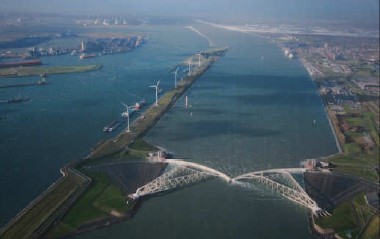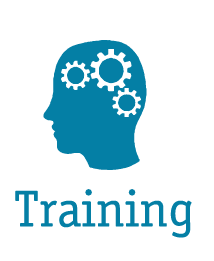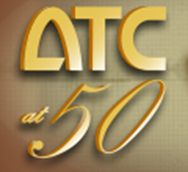In July 2009, ATC Board members and staff visited Netherlands, in order to learn about flooding and flood management from those who have considerable practice in it.
The ATC visit had two segments: First, there was an exploratory visit by three ATC
Board members and two ATC staff members. The site visits included the Maeslant Storm Surge Barrier in Maasluis, shown below, as well as other major flood protection systems. The purpose of this exploratory segment was to meet with representatives of the flood community and travel to sections of the country that are at high risk of flooding. Second, a workshop was held for the Dutch and the US contingents. In this workshop, the Dutch contingent, consisting of flood mitigation professionals, explained many parts of the flood hazard as viewed and managed by the Dutch, including some issues with current policies and future projects that are necessary to continue to protect the country. ATC Board and staff members discussed aspects of hazards in the US.
In the recent years, ATC has been expanding its outreach into the flood hazard area by adding several ATC Board members who are active in the flood hazard, and most recently, by adding a Director of Wind and Flood Hazard Mitigation to ATC staff in 2008. As a result of the site visits and the workshop, the ATC Board and staff have recognized areas where ATC could contribute significantly to reducing losses caused by floods in the United States.

Photo of Maeslant Storm Surge Barrier
7/2009




